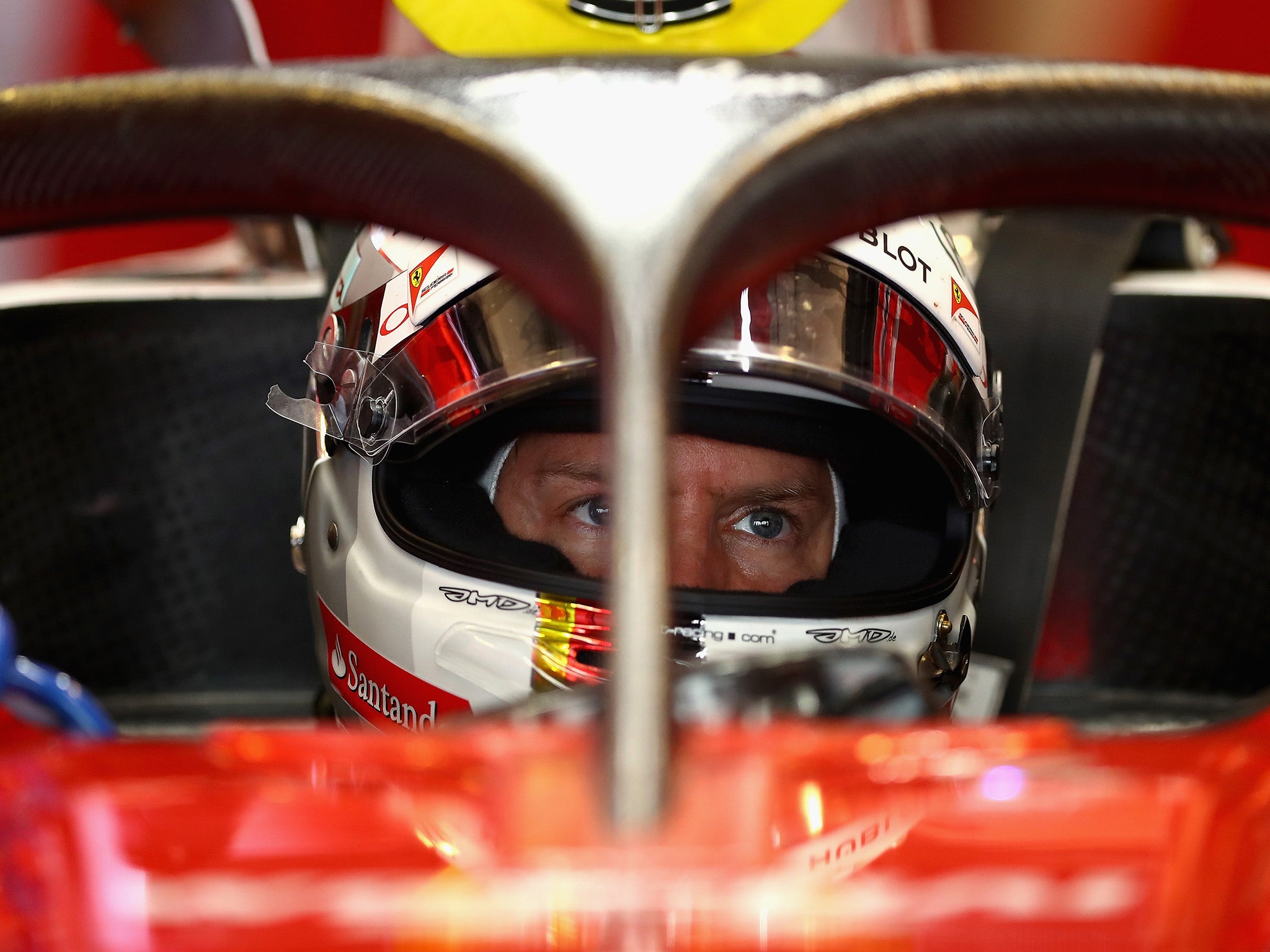Hungarian Grand Prix: Sebastian Vettel and Max Verstappen weigh in on 'halo' protection controversy
Renault's Jolyon Palmer and Haas driver Kevin Magnussen were among those to speak out against the head protection device

Leading Formula One drivers have come to the defence of the controversial halo head protection device which FIA president Jean Todt contentiously mandated for 2018 earlier this week, after social media exploded with anger at the governing body’s apparent erosion of F1’s DNA in the name of safety.
As FIA safety director Laurent Mekies made a presentation of the “net safety benefits” of the device, which attaches to the cockpit of each car with the aim of preventing the ingress of debris or errant wheels during accidents, Sebastian Vettel spoke in its favour.
The German champion, under the microscope after his outbreak of road rage against Lewis Hamilton in Baku, had tried the alternative shield – a reinforced clear windscreen - for a lap in practice at the recent British Grand Prix at Silverstone. But while he said that made him dizzy because of visual distortion, he praised the device that detractors have suggested emasculates the appearance and challenge of F1 cars by giving drivers the appearance of now being wrapped completely in cotton wool, and makes them look as if they are wearing a flip-flop on their head.
While fans seem to detest the effect on the cars’ aesthetics, the leading drivers said that the looks were unimportant and that safety was the key.
“I think overall you need to understand that it’s a decision that helps us in the car in case something goes very wrong,” Vettel said. “If you look at Formula One and the way Formula One cars look and so on, I can understand that people say it doesn’t belong on a Formula One car. On the other hand, I think times are changing and moving forward. I think if you put it very clear then it should also be very clear for everyone and then it wouldn’t be a doubt in your mind whether to introduce it or not.”
Referring to the hugely popular former F1 racer Justin Wilson who lost his life in a freak accident during an Indycar race at Fontana in California in 2015, when he was struck by the nosecone from race leader Sage Karam’s car which crashed, he added: “I think if you offer the system as it stands with the power that it has to give us additional protection, offer that to Justin Wilson, I think he would take it and we would all be happy to take it to help save his life.
“Now we can’t turn back the clock, but I think knowing that something is there that helps us in some scenarios it would be ignorant and stupid to ignore it. Regarding the look, I like Formula One cars of the past but there’s also elements I like nowadays. We’re racing cars with wings, that Formula One cars didn’t have until late Sixties. Now it’s part of it.
“There’s plenty of other examples. We had V12 engines, which I’d like to go back to and we don’t have them anymore. Overall it’s supposed to help us, so I think that’s what we need to remember.”
Fernando Alonso said he thought he would have been safer when he barrel-rolled his McLaren out of the 2016 Australian GP and ended up upside down in a gravel bed after a 180 mph accident, but several of their younger counterparts were more outspoken against it.
Kevin Magnussen is a dyed-in-the-wool fan of old school racing and one of the few drivers with a deep understanding of the sport’s history and heritage.
“When you look at the car and its ugly, F1 cars aren’t meant to be ugly,” the Haas driver said trenchantly. “That is the reason that a Ferrari is more exciting than a Mazda. It is something to do with passion, and if it looks s***, it is s***.”
“I don’t like it,” Red Bull’s Max Verstappen said. “Since we introduced a virtual safety car that has reduced a lot of the risk of speeding under the yellow flags in the race.
“Also with the wheel tethers, they are quite strong so you won’t lose a wheel very easily and when there are parts flying around the car the halo isn’t really going to protect you. I don’t really understand why we should need it.”
It is something to do with passion, and if it looks s***, it is s***.
Jolyon Palmer suggested that the introduction of the halo marked the end of the old F1.
“It’s an overreaction to problems in other series,” the Renault driver said. “It’s a sad day, a mistake, and there’s no coming back from it.
“This will be the end of F1 as we know it, with an open cockpit. Since 1994 there’s been one fatality in F1 – Jules Bianchi – which is tragic, but the halo wouldn’t have stopped it.
“The halo would have prevented no death in F1 in 23 years but because of incidents in Indycars (Justin Wilson) and Formula 2 (Henry Surtees) where there were different tracks and different safety measures, we’re into something in F1 that changes the whole tradition and history of the sport.”
Subscribe to Independent Premium to bookmark this article
Want to bookmark your favourite articles and stories to read or reference later? Start your Independent Premium subscription today.

Join our commenting forum
Join thought-provoking conversations, follow other Independent readers and see their replies